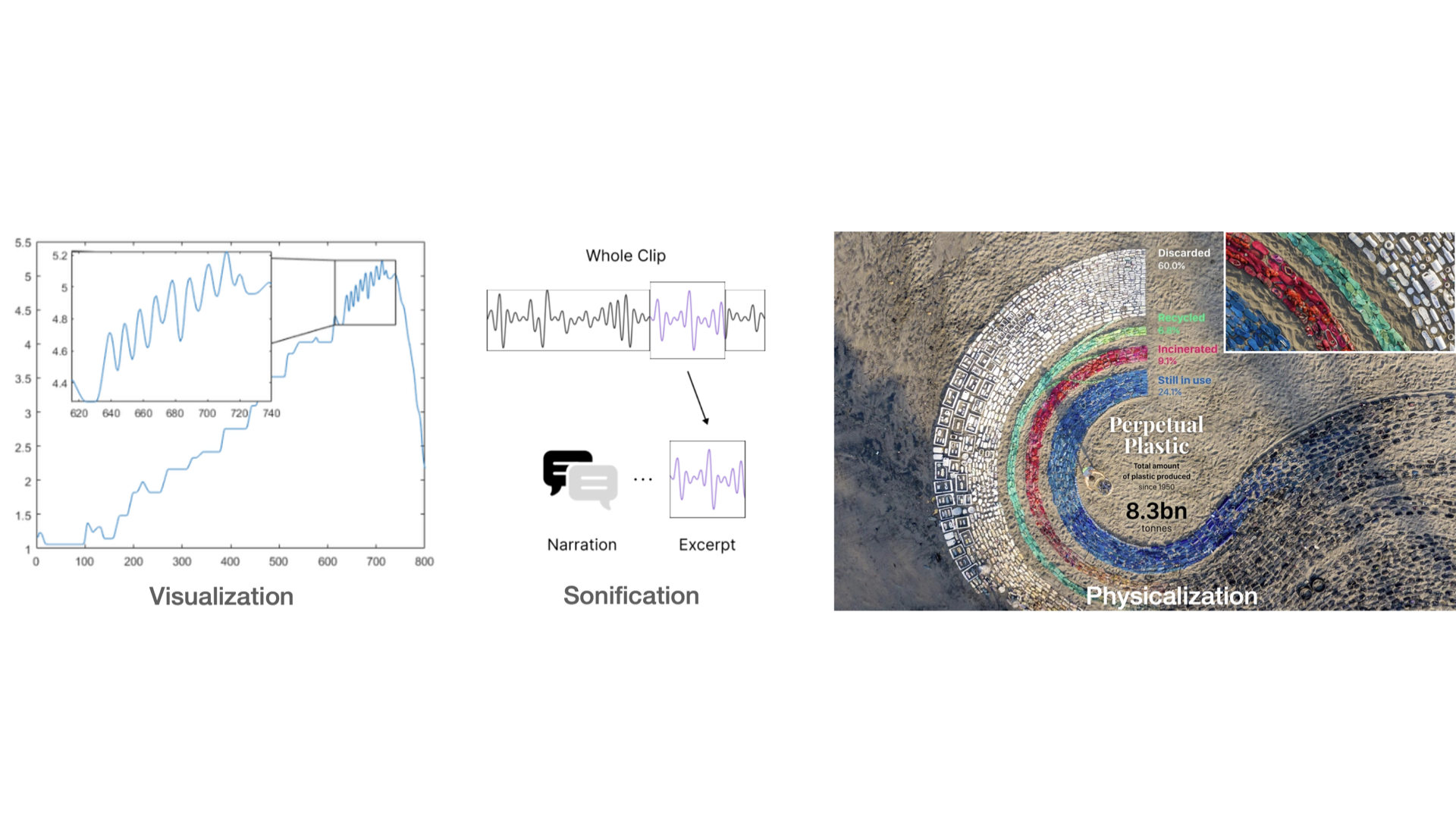Integrating Annotations into the Design Process for Sonifications and Physicalizations
Rhys Sorenson-Graff - Whitman College, Walla Walla, United States
S. Sandra Bae - University of Colorado Boulder, Boulder, United States
Jordan Wirfs-Brock - Whitman College, Walla Walla, United States
Download preprint PDF
Download Supplemental Material
Room: Bayshore VI
2024-10-17T15:00:00ZGMT-0600Change your timezone on the schedule page
2024-10-17T15:00:00Z

Fast forward
Full Video
Keywords
Annotations, physicalization, sonification
Abstract
Annotations are a critical component of visualizations, helping viewers interpret the visual representation and highlighting critical data insights. Despite their significant role, we lack an understand- ing of how annotations can be incorporated into other data representations, such as physicalizations and sonifications. Given the emergent nature of these representations, sonifications, and physicalizations lack formalized conventions (e.g., design space, vocabulary) that can introduce challenges for audiences to interpret the intended data encoding. To address this challenge, this work focuses on how annotations can be more tightly integrated into the design process of creating sonifications and physicalizations. In an exploratory study with 13 designers, we explore how visualization annotation techniques can be adapted to sonic and physical modalities. Our work highlights how annotations for sonification and physicalizations are inseparable from their data encodings.